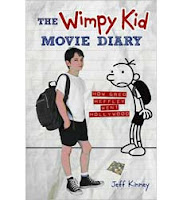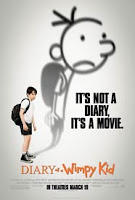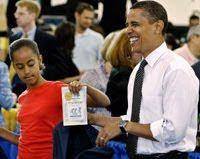 Books lead to education.
Books lead to education.There are three things that you can do to help ensure your child will become a reader:
1) Read to him every day.
2) Have lots of books in your home.
3) Read, yourself.
The research is very consistent. Statistically, families that do these three things end up having kids who read.
Yesterday, the
Toronto Star ran an article about the benefits of having lots of books in your home.
Basically, the more books in the home, the more education the child is likely to get. The effect is very profound in less-developed countries like China and among low-income families.
"In China the study found a child whose parents own 500 books will average 6.6 more years of education than a child from a home without books. Amongst blacks in South Africa it is 4 years. In the U.S. the figure is 2.4 years. In Canada it is 1.6 years. According to Evans a child from a family rich in books is 19 percentage points more likely to complete university than a child who grew up without a home library." (-
Toronto Star.)
Why?
It's a statistical correlation. In other words, having books doesn't send a kid to university. But in homes with lots of books, kids tend to go to university. And if parents are poor and uneducated, kids are much more likely to go to school longer when there are lots of books in the home.
There is another link, brilliantly outlined in the book
Freakanomics. When a child is surrounded by books, she feels entitled to them. Whether or not she even opens up a book at home, she becomes comfortable with them, understands them and feels that she is entitled to be in a place where there are lots of books - ie, a university.
The article and associated research also speaks to my third point - that reading, yourself, will get your child reading.
"If you get parents reading even a small amount, Evans said, you gain in cognition, learning capacities and vocabulary in children. “This study says having bookish parents no matter where they sit in social stratification if they stick to their books they can improve their children’s futures,” she said." (-
Toronto Star.)
So number one, read to your child every day.
Number two, give your child his own books.
Number three, read yourself.
Here is a link to
the article in The Star, by Debra Black.
And are some past GKR articles that talk about the three most important things parents can do to get their kids reading:
I know it sounds like I'm beating on the same drum--read to your child, scatter books, read yourself. But everything, everything I read about literacy points to the same things. It's like saying, "If you want to lose weight, eat less and exercise more." Yes, it's simple.
But yes, it's true.
Thank you to my wonderful husband for pointing this article out to me. Good get.
 It's a good idea to link learning to physical activity.
It's a good idea to link learning to physical activity.
 It contains everything boys, in particular, like in books: facts, brief snippits of text and lots of pictures. I can’t imagine there’s a Wimpy Kid fan out there who wouldn’t love this book.
It contains everything boys, in particular, like in books: facts, brief snippits of text and lots of pictures. I can’t imagine there’s a Wimpy Kid fan out there who wouldn’t love this book.











